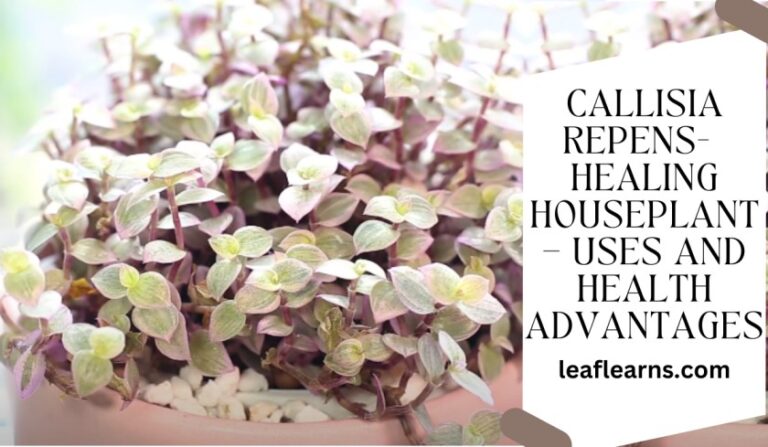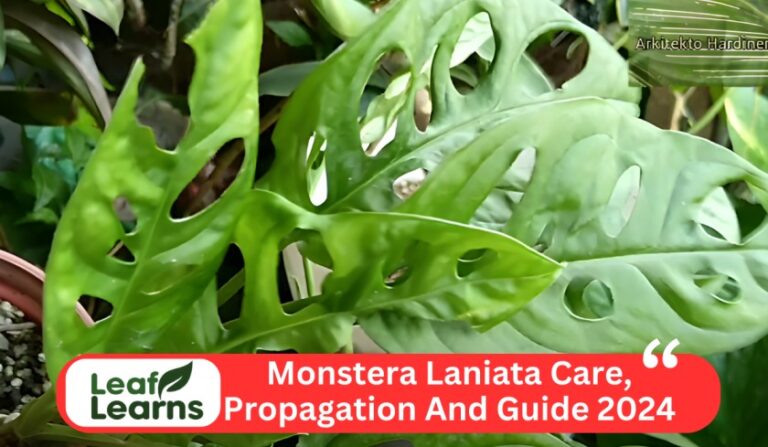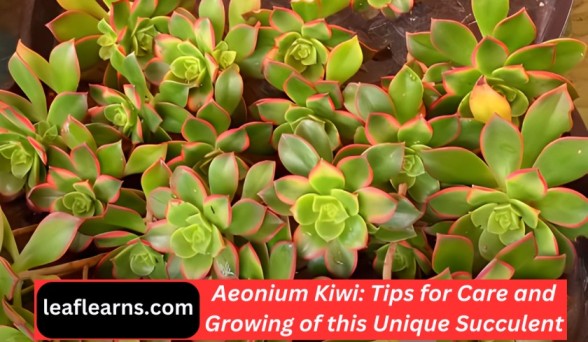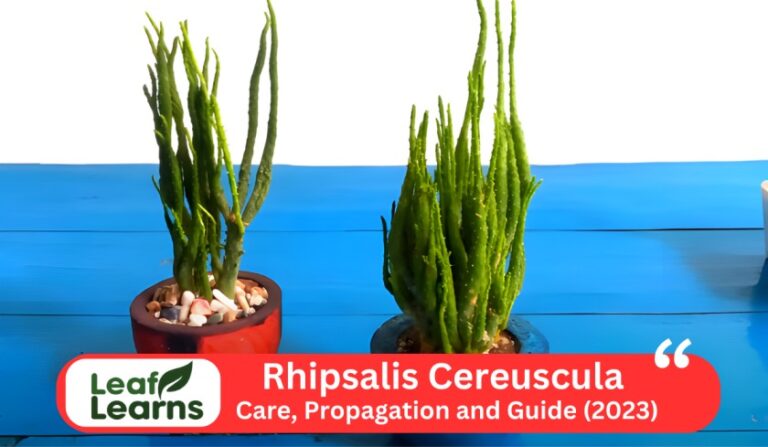How To Care and Grow For Monkey Cup Plant (2023)
Nepenthes spp., also known as monkey cups or tropical pitcher plants or monkey cup plant are fascinating carnivorous flowering plants native to the tropical regions of Asia, including countries like Thailand, Malaysia, the Philippines, Indonesia, Singapore, and New Guinea.
This remarkable genus, belonging to the Nepenthaceae family, encompasses approximately 140 known species, predominantly thriving in Southeast Asia and Australia.

These plants are divided into two categories: highland and lowland, each requiring specialized care. Nepenthes are renowned for their unique leaf morphology, featuring tendril-topped pitchers that serve as traps for insects and small animals. Interestingly, the common name “monkey cups” originates from monkeys occasionally drinking the fluid found in these pitchers.
It is called “Monkey Cups” due to the fact that monkeys occasionally consume the liquid present in the pitchers. They are actually enlargements of the mid-vein within the leaves. Insects are attracted to their nectar secretions, which are white and odorous.
These exotic and colorful plants have captured the awe of botanists since their discovery in the 17th century by Europeans, with their elaborate traps proudly flaunting their carnivorous nature.
Among the most accessible species are those from Borneo, Sumatra, and various Philippine islands, making Southeast Asia the main stronghold of this intriguing genus.
| Common name | Monkey Cup plant, tropical pitcher plant. |
| Scientific Name | Nepenthes |
| Family | Nepenthaceae |
| Distribution | Southeast Asia, Madagascar, Australia, and the Indian Subcontinent |
| Diet | Primarily insects and other small arthropods, occasionally small vertebrates |
| Size | range from small (10 cm) to large (up to 1.5 meters) |
| Temperature | 64 – 81 degrees Fahrenheit |
| Leave colour | Dark Green |
| Flower | Purple, Black |
| Propagations | Stem cutting |
| Light requirement | Bright indirect sunlight |
| Soil requirement | Moist but also well-draining soil |
| Watering Need | Regular, Keep Soil Moist |
| Uses | Mainly ornamental in horticulture, some traditional medicinal uses in local cultures |
| Fertilizer | Diluted Balanced fertilizer |
| Toxicity | Not toxic. |
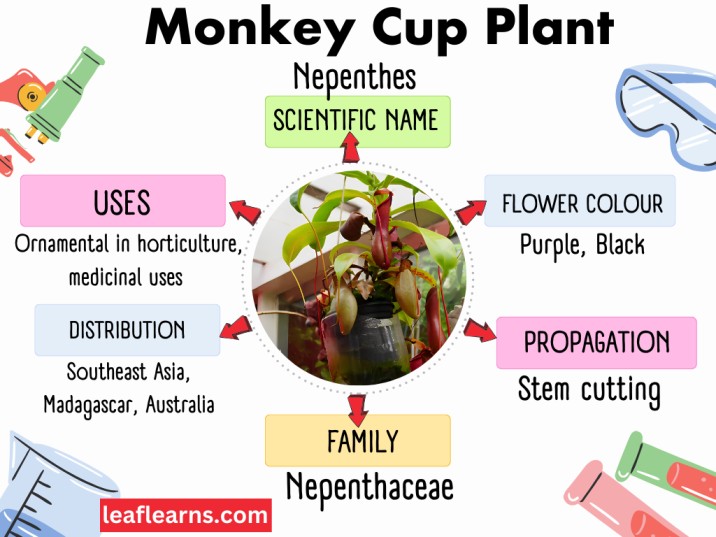
Contents
- 1 Monkey Cups Care
- 2 Pruning
- 3 Propagation
- 4 Flowers
- 5 Repotting
- 6 Toxicity
- 7 About Square Monkey Cups Variety
- 8 About Monkey Pot Plant Variety
- 9 Common Health Problems/Pests And Diseases
- 10 Common Symptoms
- 11 Care Instruction
- 12 Top Tips & Info
- 13 Mastering Monkey Cup Plant Care: Essential Tips and Insights
- 14 Exploring the Enigmatic World of Monkey Cup Plants in 2023
- 15 Conclusion
- 16 FAQs
Monkey Cups Care
Light Requirements
The Monkey Plant care need light to thrive, thus this is essential. Nepenthes, the technical name for these interesting carnivorous plants, require enough of indirect sunlight to thrive. Put your monkey cup in a spot where it can get 4 to 6 hours a day of bright, filtered light.
They can withstand a little early sun, but extended exposure to strong sunlight should be avoided since it might burn their tender leaves.
A stunning addition to any indoor or outdoor garden, the Monkey Cup thrives when given the proper amount of light to produce its distinctive pitcher traps for catching insects as well as to retain its rich, vivid foliage.
Soil Requirements
Paying close attention to the soil needs of Monkey plant care is essential to ensuring their healthy development and colourful appearance. These amazing carnivorous plants do best in a well-draining mixture that resembles the environment of their native peat bogs.
Sphagnum moss mixed with perlite or sand works wonderfully to keep the required acidity level and avoid soggy roots.
Keep in mind that these plants hate mineral-rich or calcareous soils, so use their recommended blend, maintain constant moisture, and watch your Monkey Cup thrive thanks to its exceptional insect-catching abilities.
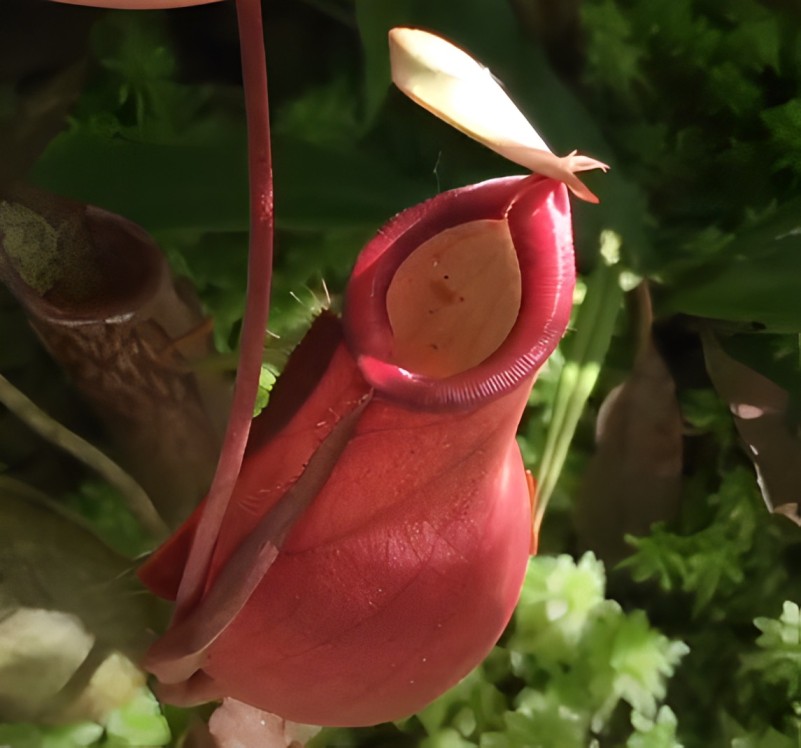
Water Requirements
The need for water is a crucial part of caring for this plant. These amazing carnivorous plants, also known as Nepenthes, are native to tropical climates and have very particular moisture requirements. Their water needs vary according on their habitat, and they do best in constantly wet but well-draining soil.
In order to prevent mineral accumulation, Monkey Cups should generally be irrigated thoroughly with distilled or rainfall, keeping their soil continually wet but not soggy.
Due to the fact that they frequently thrive in humid jungle conditions, it is crucial to provide them enough humidity. The secret to growing these fascinating insect-eating plants to their maximum capacity is keeping an eye on soil moisture and changing watering frequency accordingly.
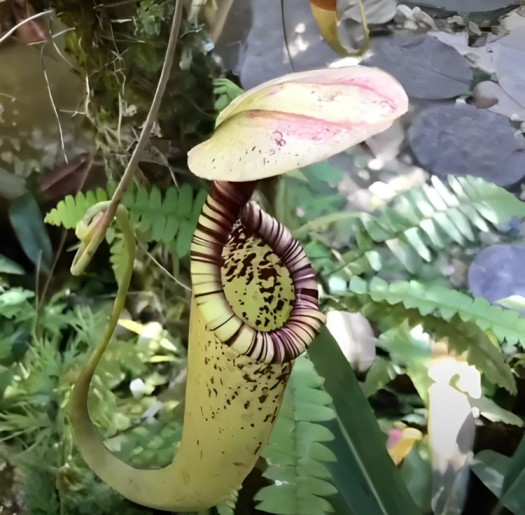
Fertilizer Requirements
Paying close attention to your Monkey plant’s care fertilizer needs is essential for ensuring its best development. It is crucial to give these carnivorous plants a specialised fertilizer that is devoid of minerals and heavy metals since they grow in nutrient-poor soils.
Choose a high-quality, diluted insect-eating plant fertilizer or make your own by combining distilled water with a small number of crushed insects or fish meal.
Apply the diluted fertilizer sparingly, about once a month, throughout the active growing season, which normally lasts from early spring to early fall, to match their natural nutrient intake.
A gentle hand with feeding is the key to encouraging healthy Monkey Cup Pitcher plant development, therefore take care not to overfertilize as this might hurt the plant.
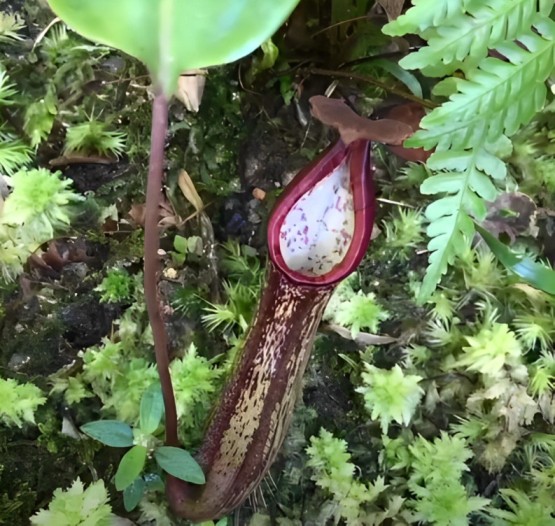
Temperature And Humidity
The right humidity and temperature must be maintained for Monkey Cups maintenance. These unusual carnivorous plants flourish when kept in circumstances that resemble their original habitat since they are native to damp and warm climates.
Monkey Cups should ideally be kept at temperatures between 70°F and 85°F (21°C and 29°C) with high humidity levels, often at 50% or more. Use a humidity tray or spritz the plant frequently to achieve this.
These alluring plants may successfully catch and digest insects if the proper temperature and humidity are maintained, which promotes their general health and growth.
Pruning
Monkey Plant care must include pruning to maintain the health and vigor of this rare carnivorous plant. Regular trimming keeps the plant’s general form in check and prevents the overpopulation of its recognizable pitcher-shaped leaves, which act as insect traps.
Trimming away any dead or withered pitchers is vital to encourage strong development and improve the plant’s capacity to acquire prey since they can obstruct new growth and serve as breeding grounds for mould and pests.
A flourishing and alluring addition to any carnivorous plant enthusiast’s collection, this plant may direct additional energy towards creating new pitchers by carefully clipping away any extra foliage and used traps.
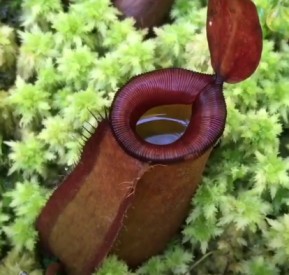
Propagation
For many years, plant aficionados and nature lovers have been fascinated by the Nepenthes, a fascinating and unique carnivorous plant. It is an eye-catching addition to any botanical collection because to its unusual pitcher-shaped leaves, which are made to trap and digest insects.
Propagation is an interesting and fulfilling method for increasing your collection of Monkey Plants if you’re interested in cultivating your own.
Seeds
Using seeds is one of the most popular ways to spread monkey cup pitcher plant. When trying to grow unusual varieties of the plant, this strategy might be very tempting because it promotes genetic variety. You may grow this plant from seeds in the following ways:
Gathering Seeds: Await the ripe seed pods the monkey plant produces. When these pods are prepared for harvest, they will become brown. The small, fragile seeds should be carefully collected.
Making the Growing Medium Ready Use an acidic potting mix that drains well and is devoid of fertilisers. Aeration and a somewhat acidic soil are preferred by monkey cup pitcher plant. Put this mixture into tiny pots.
Seed Sowing: Distribute the gathered seeds evenly over the top of the soil in the pots. The seeds shouldn’t be buried since they need light to sprout.
Maintaining Moisture and Humidity: To maintain moisture and humidity, cover the pots in plastic wrap or set them under a humidity dome. Maintain a constant moisture level in the soil that is not wet.
Place the pots in an area with indirect sunshine to provide light. Avoid the sun’s direct rays since they might burn the immature plants.
Seedling emergence and transplanting should begin in a few weeks. Transplant them into larger pots or the ideal growth place once they are big enough to handle.
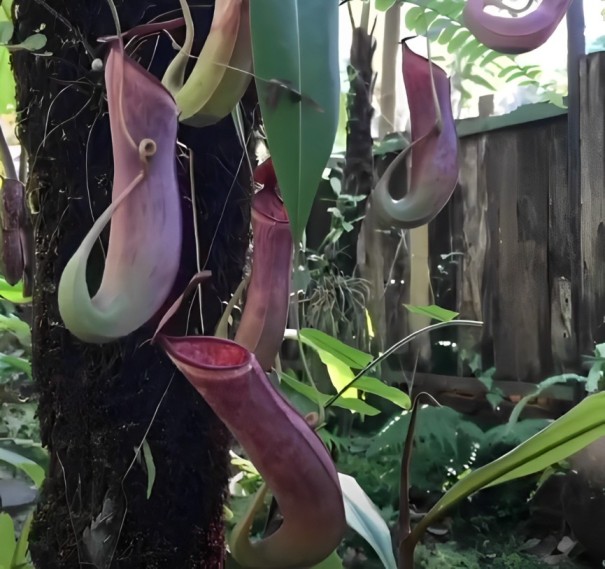
Leaf Cuttings
Leaf cuttings are an additional technique of growing monkey-cup plants. You may produce clones of the parent plant with this technique. This is how you do it:
How to Choose Healthy Leaves: Pick a leaf from the parent plant that is mature and healthy. Look for leaves that have thorny tendrils that are visible.
Cut the Leaf: The leaf should be divided into parts using a clean, sharp knife or pair of scissors. Ensure that each section has a tendril attached. The length of the parts should be between 3 and 6 inches.
The cuttings are planted: Put the cuttings in an acidic, well-draining potting soil. With the tendril end facing downward, plant them vertically into the ground. Make sure at least one of the nodes, which are the little bumps on the stem, is buried in the ground.
To maintain high humidity levels around the cuttings, cover the pot with a plastic bag or put it in a humidity dome. This will promote root growth.
Place the pot in an area with indirect sunshine to provide light.
The cuttings can be moved into larger pots or their permanent growing place once they have grown roots and new growth.
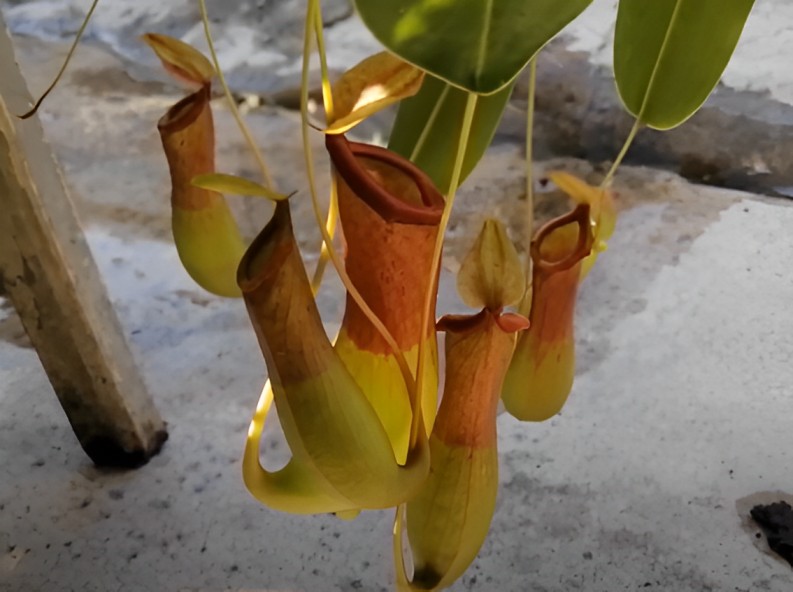
Division
How to Choose a Mature Plant: Pick an established monkey plant with several growth points, or “crowns.”
Carefully Take the Plant Out: Carefully remove the plant from its pot without damaging the roots.
Divide the Plant: Cut the plant into pieces using a clean, sharp knife or scissors, ensuring sure that each segment has a good amount of roots and at least one growing point.
Establish the Divisions: Place each division in a separate container with the appropriate potting soil.
Water and Care: Give the divisions plenty of water, and set them somewhere where there is some shade.

Flowers
The monkey cup flower has an important role to play in the ecosystems it inhabits. Moreover, monkey cup flowers serve as habitats for small animals, including frogs, lizards, and bats, which can be beneficial for agriculture and forestry.
| Feature | Description |
|---|---|
| Size | Up to 1 meter (3 feet) tall |
| Pitcher capacity | Up to 3.5 liters (1 gallon) |
| Pitcher shape | Cup-shaped with a smooth, slippery surface and a waxy coating |
| Pitcher function | Traps and digests insects and other small animals |
| Habitat | Lowland rainforests of Borneo |
| Cultural significance | Important cultural symbol in Borneo, believed to have magical powers |
| Tourist attraction | Popular tourist attraction and sought-after souvenir |
Researchers are interested in the medicinal properties of monkey cup flowers in addition to their ecological benefits. Some studies indicate that monkey cup flower extracts may have anti-inflammatory, anti-cancer, and antimicrobial properties.
Deforestation and habitat loss threaten monkey cup flowers. In addition to being threatened by illegal collection of wild plants for horticultural trade, monkey cup flowers are also threatened by the clearing of forests for agriculture, housing, and other development.
The blooms of the monkey plant are generally pendulous and come in a variety of colours, from intense reds and purples to exuberant oranges and yellows.
The presence of the plant’s recognisable pitcher-shaped leaves with these blooms, which provide a fascinating juxtaposition between delicate petals and lethal traps, is what makes these flowers really special.
Repotting
Repotting Nepenthes is an important step in guaranteeing the longevity and development of this unusual carnivorous plant. It entails gently moving the plant into a little larger pot to give it more room for root growth. This is typically done every 1-2 years.
To replicate the plant’s natural environment, the new pot should have great drainage and be filled with a proper mixture of sphagnum moss, perlite, and orchid bark. The fragile tendrils and pitchers must be handled carefully during repotting to prevent harm.
Toxicity
While fascinating with its unusual pitcher-shaped leaves made for capturing insects, the monkey cup plant, also known as Nepenthes, may be dangerous to curious animals including pets and tiny critters.
The digestive fluid of the pitcher plant, which aids in the breakdown of trapped insects for nutritional absorption, is what gives it its poisonous properties.
The plant’s digestive secretions can pose a risk to smaller animals if consumed, causing digestive discomfort or even death, even though they are not dangerous to people in tiny amounts.
Consequently, it’s imperative for pet owners and people who share environments with wildlife to take caution when planting these exciting botanical species, making sure they are out of reach to prevent inadvertent injury to animals hoping to have a taste of this carnivorous plant.
About Square Monkey Cups Variety
Nepenthes rajah, also known as square monkey cups, is a carnivorous plant native to Borneo. Their pitchers can hold 3.5 liters of liquid, making them the largest carnivorous plants in the world.
By trapping and digesting insects and small animals, these pitchers provide nutrients to the plant. Besides being a popular tourist attraction, monkey cups contribute significantly to the rainforest ecosystem.
About Monkey Pot Plant Variety
In South America, particularly Brazil, monkey pot plants are native to tropical rainforests under the scientific name Lecythis ollaria. A pot-shaped fruit hangs from its branches, allowing its branches to stand out from the crowd.
The variety is known for its unique, striking appearance. As large as 40 centimeters (16 inches) in diameter and weighing up to 25 kilograms (55 pounds), these fruits look similar to giant gourds. Monkeys are believed to be attracted to the fruits of the monkey pot plant, using them to nest.
Common Health Problems/Pests And Diseases
The interesting carnivorous plant or Nepenthes, has developed special adaptations to survive in its natural settings throughout Southeast Asia. Like other plants, it is susceptible to a number of ailments, pests, and illnesses that can limit its ability to grow and thrive. Typical problems include:
Poor Soil Quality: Acidic, well-draining soil is necessary for this plant. Inadequate soil conditions might result in stunted development and poor general health.
Insufficient Humidity: These plants require high humidity levels to grow. Dry leaves and decreased pitcher production are only two problems that might result from low humidity.
Improper Watering: Stressing the plant by either overwatering or underwatering it. It’s critical to keep the soil’s moisture content constant.
Aphids, mealybugs, and scale insects are typical pests that may harm monkey-cup plants. The plant’s pitchers and foliage may be harmed by several pests.
Bacterial and Fungal Diseases: If the plant is exposed to excessive moisture or has insufficient ventilation, it may develop ailments like root rot and leaf spot.
Also, make sure to check out our in-depth Indoor plant disease guide.
Common Symptoms
Browning or yellowing of the pitcher leaves, the Monkey Plant’s distinctive method of capturing insects, is one of its typical symptoms. This discolouration frequently denotes insufficient moisture content or vitamin deficiency. When the plant needs additional water, it may also show withering or drooping leaves.
An insufficient amount of light might cause elongated, pale leaves or stunted development. Finally, the Monkey plant may become vulnerable to pests like aphids and mealybugs, which can harm its delicate leaves, if it is under stress or receives insufficient care.
The health and vitality of this fascinating carnivorous plant are guaranteed by paying proper attention to these signs.
Care Instruction
Nepenthes are fascinating carnivorous plants that require particular care to flourish. It’s critical to provide your Monkey Cups the proper surroundings to guarantee their health.
They make ideal choices for terrariums or bathrooms since they grow in strong, indirect sunlight and prefer high humidity levels. They detest sitting in standing water, so keep the soil continuously wet but not soggy. Use of chemical pesticides should be avoided around monkey cups since they consume insects.
Allow them to capture their own prey instead. Trim any pitchers that have died or wilted on a regular basis to promote new growth and keep the plant healthy.
You may appreciate your plant distinctive beauty and interesting insect-trapping powers by according to these maintenance guidelines.
Top Tips & Info
Nepenthes, commonly referred to as tropical pitcher plants are fascinating carnivorous plants that do well in humid tropical climates.
These plants are an excellent choice for homes or businesses since they can be grown successfully indoors as long as they receive bright, indirect sunshine.
Use a well-draining, acidic potting mix to ensure appropriate drainage, and use distilled or rainfall to keep the soil continuously wet.
Feed monkey cup pitcher plant sparingly with tiny insects or the proper carnivorous plant fertiliser because they have specialised pitcher traps that attract and digest insects, assisting in nutrient intake.
To simulate their natural environment, keep humidity levels high, ideally around 50-60%, and think about using a humidity tray or a room humidifier.
To promote new growth, regularly prune dead pitchers and foliage. Try to avoid touching the fragile traps too much.
Stem cuttings can be used to multiply monkey plants and repotting should only be done after the plant has outgrown its container.
Mastering Monkey Cup Plant Care: Essential Tips and Insights
Caring for a monkey plant is essential for its well-being. To ensure proper care for your carnivorous monkey cup, start by understanding its unique needs. These plants thrive in well-draining soil, making the choice of soil for this plant vital. Propagating a plant can be done through careful division, while pruning is necessary to maintain its size and health.
Knowing the monkey cup plant’s genus, scientific name, and size is essential for providing tailored care. Additionally, learning about what this plant eat is crucial, as they are carnivorous by nature. You can find fascinating monkey-cup plant facts and images to aid in identifying and caring for this captivating species.
Understanding where the monkey-cup plant is located in different regions, like Australia, Japan, and the UK, can help tailor care practices to local conditions. Keeping an eye on the plant’s appearance, including its leaves and flowers, ensures you provide the best care possible.
Exploring the Enigmatic World of Monkey Cup Plants in 2023
When considering the visual appeal of the monkey cup-plant, its unique characteristics stand out. This plant boasts captivating visuals, with its distinctive pitcher-shaped leaves and vibrant yellow flowers. Proper care, including addressing yellow leaves and issues related to its carnivorous nature, will ensure its beauty thrives.
Repotting may be necessary as the plant grows, and when buying a monkey cup plant, you should always assess its health and condition. Hanging pitcher plant monkey cup arrangements can be an eye-catching addition to your space, with careful care and maintenance.
To delve deeper into the world of monkey cups, explore resources like monkey plant videos and informative wikis. Whether you’re a dedicated plant manager or just curious about these unique specimens, learning about monkey cups in 2023 offers a world of exciting possibilities.
Conclusion
Caring for monkey cup pitcher plant, also known as Nepenthes, is a rewarding journey into the world of carnivorous plants. These unique plants from Asia require ideal conditions like indirect sunlight, acidic soil, and regular watering.
Avoid harmful pesticides, understand their nutritional needs, and ensure routine care, including trimming and repotting, for their health and beauty. With proper care of this plant make a stunning addition to any botanical collection, showcasing the wonders of nature.
FAQs
Is nepenthes toxic to pets?
No its not toxic to pets
Why is Nepenthes called a monkey cup?
Nepenthes is known as a “monkey cup” because in the wild, monkeys have been observed drinking rainfall from its pitcher-shaped leaves.
How do you take care of a monkey cup plant?
Keep your Nepenthes on a sunny windowsill or at a location with plenty of intense light. Water: Do not let the plant stay in standing water, but always keep the soil moist. Ensure that all water has completely drained through the soil.
What do monkey cup plants eat?
They all eat insects or small animals like eat flies, wasps, Ants, Spiders, Beetles, Snails, Slugs, Small frogs, and Lizards etc.
Is the monkey cup a carnivorous plant?
is the sole genus of carnivorous pitcher plants in the family Nepenthaceae.
Why are they called monkey cups?
A few are thought to as tropical alpine, with cool days and cold nights. The term “monkey cups” derives from the old belief that monkeys drank rainwater from the pitchers.
Are monkey cups easy to care for?
Yes the monkey cup will thrive better in damp soil
How big do monkey cups grow?
Its height between 8 to 30 inches
What conditions do monkey plants like?
Monstera are sturdy enough to take some shade, but they grow best in direct, strong sun. But stay away from direct sunshine since it might bleach or burn the foliage.
Why are my monkey cup leaves turning yellow?
It’s probably simply your plant retiring old leaves unless brand-new leaves are turning yellow or all the leaves are changing colour at once.

